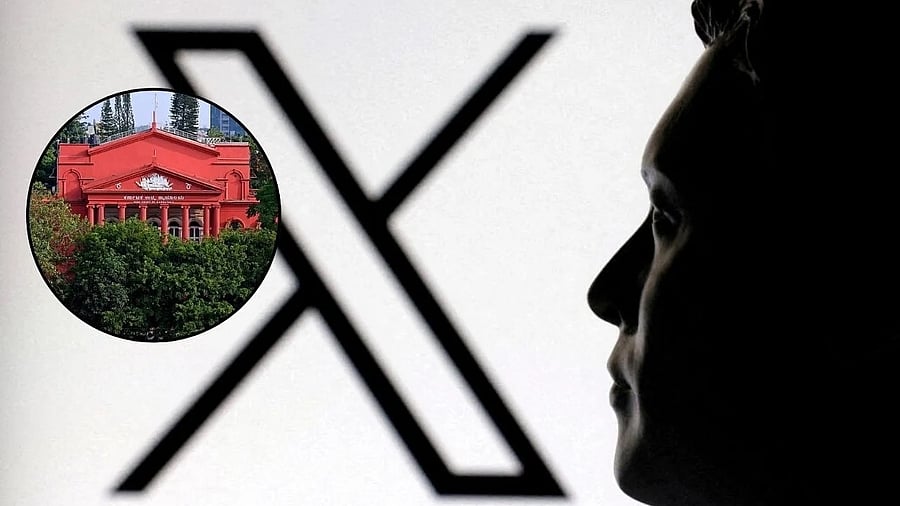
Karnataka High Court and X logo
Credit: DH Photo and Reuters Photo
Bengaluru: Social media giant 'X' Corp has informed the Karnataka High Court that it received 29,118 government requests to remove content between January and June 2025, complying with 26,641 of them, a 91.49 per cent compliance rate.
The company argued that these figures contradict a single judge’s September 24 finding that the platform intends to defy Indian law. The data was furnished as part of X’s writ appeal against the order upholding the Union government’s 'Sahyog' portal, the online system used to issue takedown directions to intermediaries.
In its recent appeal, X Corp contended that government agencies are unlawfully using Section 79(3)(b) of the Information Technology Act, 2000, along with Rule 3(1)(d) of the 2021 IT Rules, to issue content removal orders.
This, the company said, creates a parallel and unconstitutional mechanism that bypasses Section 69A of the IT Act, the only statutory process for blocking online content in India.
The Supreme Court, in Shreya Singhal versus Union of India (2015), had upheld the Section 69A framework and its built-in safeguards, the social media company cited.
X argued that Section 79 is merely a 'safe harbour' clause shielding intermediaries from liability and does not empower the government to direct content blocking.
Despite this, an October 31, 2023 MeitY memorandum allegedly authorised thousands of officials across ministries and state governments to issue blocking directions under Section 79(3)(b) and Rule 3(1)(d), sidestepping the stricter Section 69A procedure.
The company further claimed that the Ministry of Home Affairs, acting on MeitY’s instructions, created a confidential 'Sahyog' portal to facilitate such takedown orders without statutory support or transparency.
According to X, this amounts to an impermissible extension of executive power and enables censorship without due process.
The petition cited several examples of state police and central ministries, directing the removal of political criticism, news reports, parody, and other lawful speech under Rule 3(1)(d).
X Corp submitted that Rule 3(1)(d) lacks the procedural protections mandated under Section 69A, such as reasoned orders and narrow constitutional grounds under Article 19(2).
Allowing the government to block content under a less rigorous mechanism, it argued, violates Article 14 and renders Section 69A redundant.
The single judge, it said, failed to consider these constitutional implications.
A key plank of the appeal is the allegation that the single judge misapplied the Shreya Singhal case, wrongly concluding that it had been diluted after the 2021 IT Rules replaced the 2011 framework.
X maintained that the Supreme Court ruling remains fully applicable because the core statutory provisions — Sections 69A, 79 and the 2009 Blocking Rules — have not changed.